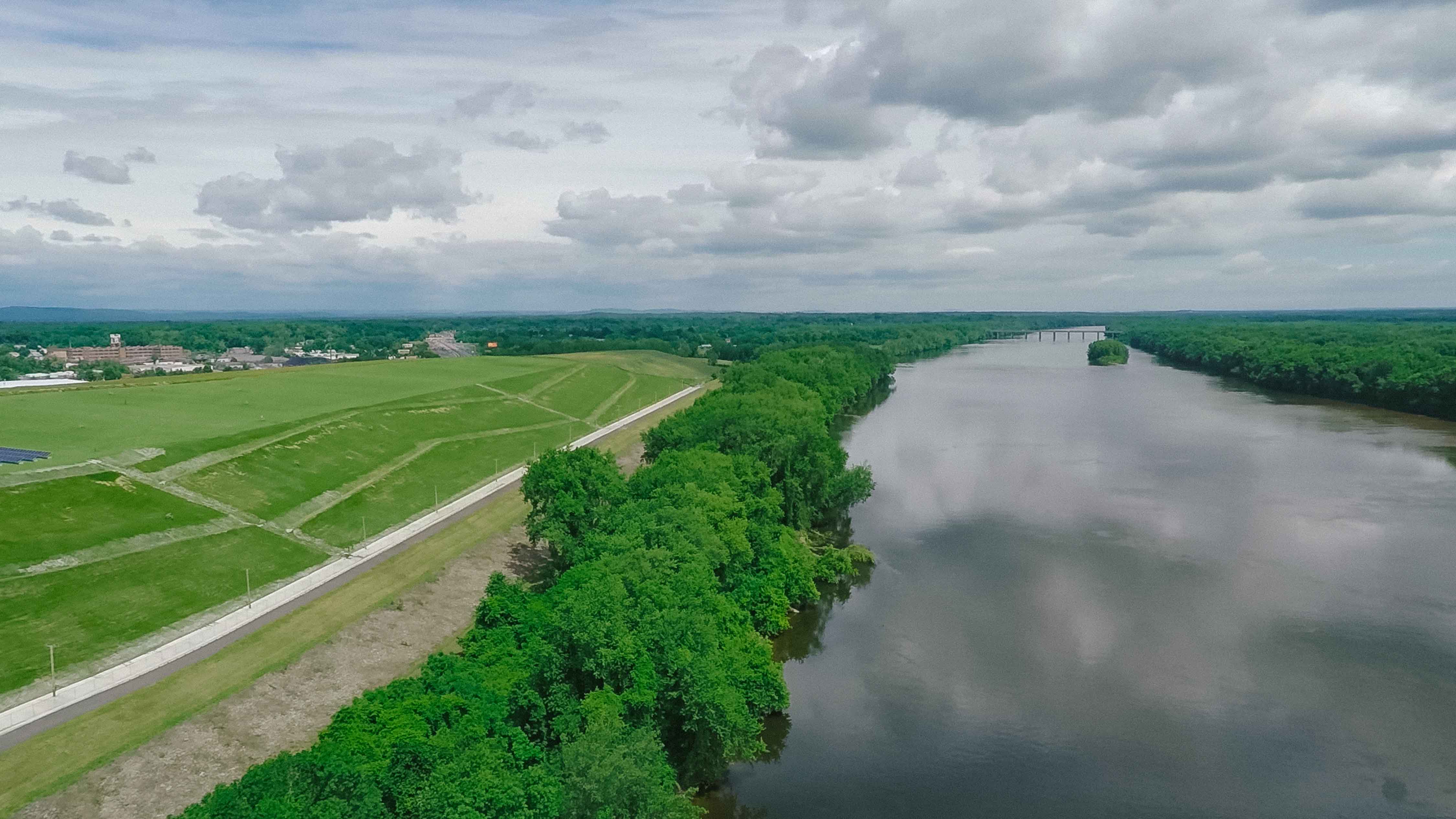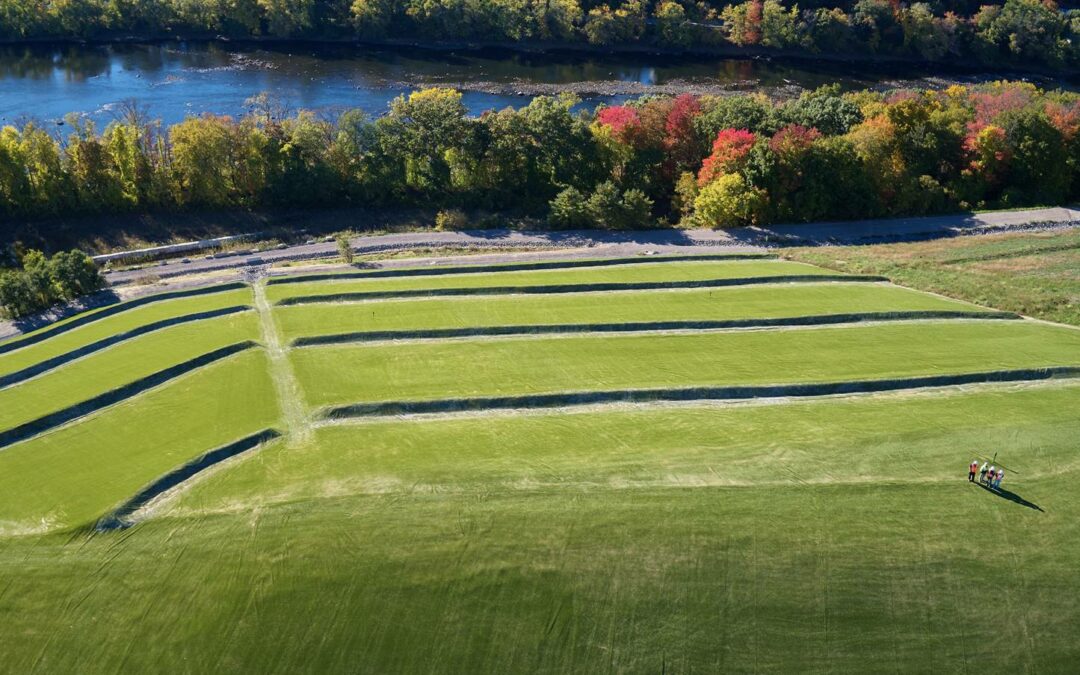 When considering a final cover system for a landfill, it is not only important to keep the water out, you must also ensure that nothing detrimental comes off the surface and lands in the water carried off your site.
When considering a final cover system for a landfill, it is not only important to keep the water out, you must also ensure that nothing detrimental comes off the surface and lands in the water carried off your site.
Closed landfills can generate large amounts of surface runoff. With a traditional soil cap, rainstorms will ultimately carry off sediment and dissolved materials such as fertilizers and chemical components. They also require a water collection area to allow the sediment to settle out before it can be released off site. This requires more space, more monitoring and ultimately more dollars.
Because soil loss from runoff is virtually eliminated with ClosureTurf®, water quality is no longer an issue. The sand infill component acts as a natural filter as the water moves down the slope and surface water runoff pond maintenance can be reduced proportional to the area covered. When retention ponds no longer require sediment storage and sediment baffles, overall volume of the pond is significantly increased. Surface water runoff areas that are lined with a cementitious infill will no longer need water quality orifices, sediment removal berms and sediment routing baffles installed in the sediment ponds. In fact, the name “sediment pond” may be changed to “surface water pond” because there is no longer a significant sediment element contributing to the total volume required. Also, the ponds can be considered DE-tention ponds rather than RE-tention ponds because water is only held long enough to mitigate the design-storm event. Another unique feature of ClosureTurf is the ability to rely on sheet flow versus accumulated concentrated flows (such as exists with on-slope berms and down chutes). This results in dramatically increasing time of concentration, and therefore the amount of sediment pond storage volume when compared to a vegetative cover.
One of the most important issues concerning proper site erosion control is the turbidity of the surface water as it is discharged from the site. A third party analysis was performed that compared turbidity on a closed cell of ClosureTurf versus a cell with a soil cover cap at the same landfill. The study was done at a site having a history of NTU exceedance due to the very fine sediment soils that are common to the region. Data samples collected showed ClosureTurf at 11 NTU’s and the soil cap at 371 NTU’s (shown in image on right). After years of attempting a wide variety of erosion control methods, the landfill owner was finally able to get well below the minimum Turbidity values required by the regulations.
was performed that compared turbidity on a closed cell of ClosureTurf versus a cell with a soil cover cap at the same landfill. The study was done at a site having a history of NTU exceedance due to the very fine sediment soils that are common to the region. Data samples collected showed ClosureTurf at 11 NTU’s and the soil cap at 371 NTU’s (shown in image on right). After years of attempting a wide variety of erosion control methods, the landfill owner was finally able to get well below the minimum Turbidity values required by the regulations.
The hydrology and erosion elimination characteristics of ClosureTurf provide many environmental benefits that contribute to water quality. It results in very low storm water runoff turbidity and provides water quality improvement across the spectrum. But perhaps, most importantly, it can provide repeatable water quality results for every design storm event so that no matter where or when the water flows off site, you can be rest assured it’s clean.

